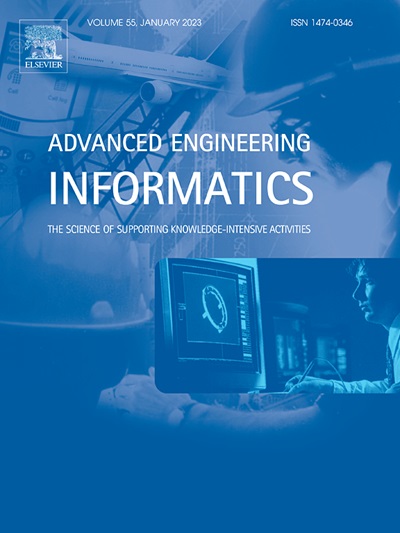Semantic elaboration of low-LOD BIMs: Inferring functional requirements using graph neural networks
IF 8
1区 工程技术
Q1 COMPUTER SCIENCE, ARTIFICIAL INTELLIGENCE
引用次数: 0
Abstract
This study proposes a method to automatically subcategorize early object types in low levels of development (LODs) into detailed types (i.e., subtypes) with distinct functional requirements, such as insulation, waterproofing, and load-bearing. While rough cost estimation is possible in the early design phase without detailed object classifications, its accuracy is often limited. Subcategorizing generic objects like walls and columns into more detailed types enhances the precision of early-stage engineering analyses, including cost estimation, load assessments, and material takeoffs. Existing automated object subclassification methods rely on information extracted from highly detailed models, which are unavailable in early-stage building information models (BIMs) due to a lack of geometric and attributive distinctions. This study addresses these limitations by leveraging functional requirements inferred from object connections and placement in early BIMs, achieved using a graph neural network (GNN). To convert BIMs into graphs, a novel threshold-enhanced triangle intersection (TETI) algorithm is introduced, overcoming inaccuracies and exception-handling issues in existing methods. The study explores two GNN-based approaches: node property prediction and node prediction. The former distinguished generic object types into 14 detailed categories, but cost estimation required greater specificity. The latter successfully classified objects into 42 subtypes, with the best results achieved using semantically rich embeddings from a large language model (LLM) and GraphSAGE with three SAGE convolution layers, three hops, and 1,024 dimensions, yielding a weighted F1-score of 0.8766. This approach significantly reduces input data requirements compared to existing methods, enabling more accurate early identification of functional requirements in low-LOD BIMs and supporting both early engineering analyses and detailing processes.
求助全文
约1分钟内获得全文
求助全文
来源期刊

Advanced Engineering Informatics
工程技术-工程:综合
CiteScore
12.40
自引率
18.20%
发文量
292
审稿时长
45 days
期刊介绍:
Advanced Engineering Informatics is an international Journal that solicits research papers with an emphasis on 'knowledge' and 'engineering applications'. The Journal seeks original papers that report progress in applying methods of engineering informatics. These papers should have engineering relevance and help provide a scientific base for more reliable, spontaneous, and creative engineering decision-making. Additionally, papers should demonstrate the science of supporting knowledge-intensive engineering tasks and validate the generality, power, and scalability of new methods through rigorous evaluation, preferably both qualitatively and quantitatively. Abstracting and indexing for Advanced Engineering Informatics include Science Citation Index Expanded, Scopus and INSPEC.
 求助内容:
求助内容: 应助结果提醒方式:
应助结果提醒方式:


